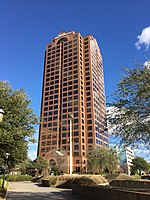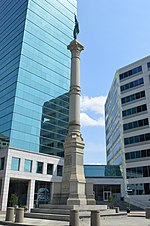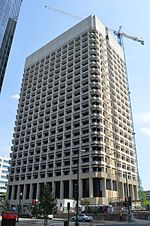Berkley Bridge (Virginia)
Bascule bridges in the United StatesBridges completed in 1952Bridges of the United States Numbered Highway SystemBuildings and structures in Norfolk, VirginiaFormer toll bridges in Virginia ... and 7 more
Interstate 64Movable bridges on the Interstate Highway SystemRoad bridges in VirginiaSteel bridges in the United StatesTransportation in Norfolk, VirginiaU.S. Route 60Use mdy dates from October 2019

The Interstate 264 Berkley Bridge is a double-leaf bascule bridge that crosses the Eastern Branch of the Elizabeth River in Norfolk, Virginia, United States. It carries Interstate 264 (I-264), U.S. Route 460 Alternate (US 460 Alt.), and State Route 337 (SR 337) across the river, connecting the Berkley neighborhood south of the river with downtown Norfolk to the north. The toll-free facility is one of only a small number of movable bridges on the Interstate Highway System, and is the first of two in the Hampton Roads region, predating the High Rise Bridge. It is named for the former Town of Berkley that is now a part of the City of Norfolk.
Excerpt from the Wikipedia article Berkley Bridge (Virginia) (License: CC BY-SA 3.0, Authors, Images).Berkley Bridge (Virginia)
Berkley Bridge Sidewalk, Norfolk Berkley
Geographical coordinates (GPS) Address Nearby Places Show on map
Geographical coordinates (GPS)
| Latitude | Longitude |
|---|---|
| N 36.83833 ° | E -76.28667 ° |
Address
Berkley Bridge Sidewalk
Berkley Bridge Sidewalk
23514 Norfolk, Berkley
Virginia, United States
Open on Google Maps








